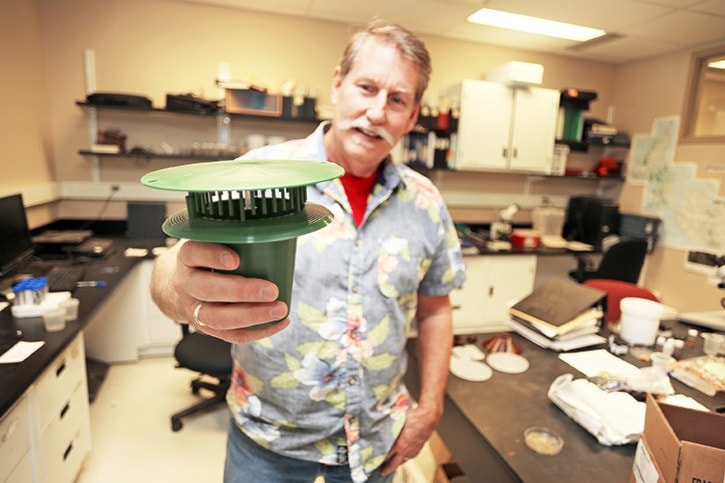A recent trap design for click beetles in Atlantic Canada has local agricultural researchers excited about its possibilities for use in B.C. to understand more about the pest whose larvae have the potential to destroy potato crops among others.
Agriculture and Agri-Food Canada (AAFC) entomologist Christine Noronha unveiled her newly designed, simple and environmentally friendly trap last Monday at a wireworm information session hosted by the PEI Potato Board in Charlottetown.
“For us it's a very useful tool to be able to collect females and to study aspects of female click beetle behaviour and various control options,” said Agassiz research scientist Bob Vernon, who has been studying wireworms (which are not actual worms, but click beetle larvae) for 20 years with AAFC.
In fact, Vernon designed a trap of his own recently and is working with Noronha to combine the differences of their cheap and easily-built devices to enhance pest control for farmers across Canada.
“[They’re] tools in the wireworm control toolbox that we're trying to build,” he said. “None of the traps... are a silver bullet. They are either useful tools for researchers or useful to growers or indicating that you've got certain species.”
The Noronha Elaterid Light Trap, or “NELT”, is made with three pieces—a small solar-powered spotlight, a plastic white cup and a piece of screening.
It uses light to attract female click beetles that emerge from the ground in May and June.
Each of these beetles can lay between 100 and 200 eggs that produce wireworms.
In a six-week test with 10 traps, more than 3,000 females were captured in the plastic cups, preventing the birth of up to 600,000 wireworms.
And screening on Noronha’s trap prevents beneficial predator insects from being caught in the trap.
Vernon’s trap on the other hand catches about 7,000 beetles over the course of four days and is 80 to 85 per cent effective within a 10 metre radius.
But it’s not a numbers competition.
“My traps have certain qualities that the P.E.I. trap doesn't and vice versa,” Vernon said.
“But together they fill in a lot of the gaps in our knowledge.”
The NELT collects all varieties of click beetles and both genders by using light as its attractant, a property that has many uses.
Vernon’s singles out species by using pheromones to lure male beetles only—making it very useful for surveys.
Because they only collect one sex and one species, users know exactly what they are catching in each trap.
They’re so simple farmers can use them without scientific knowledge. And they only cost about a buck per trap, Vernon said.
This pair of tools recently added to the AAFC’s repertoire might eventually be used for mass trapping—though that can be costly even at their lower per unit prices.
In that case farmers will want to collect the majority of females in the field before they can lay eggs.
Using traps in the grass surrounding the fields would make trapping less expensive as it takes place in reservoir areas where wireworms build up to the millions, then move into fields.
“Here in B.C., the two [European] wireworm species we have here, in the past have caused major problems to certain industries such as the potato industry,” Vernon said. “That's where it caused the most problems, but the wireworm stage of either of these species will eat virtually anything planted.”
So once they're in an area, they can be a problem for a long time if there’s nothing—or no one—to control them.
In their mission to try to get ahead of the pest that’s making a comeback as persistent and heavy (now banned) pesticides leave Canada’s soils, Noronha and Vernon cross paths often.
The Agassiz scientist is expanding his tests in P.E.I. to about 20 fields to study movement aspects of the Agriotes sputator species that B.C. doesn’t have.
And Vernon will also calibrate his male-only traps with Noronha’s catch-all devices so they can get closer to estimating the number of females in a field.
“My traps with the sputator pheromone in three fields caught just under a million click beetles,” he said. “They're extremely effective. We've been toying with the idea of mass trapping them with my traps.”
That’s a notion that should click with farmers in P.E.I. and everywhere else in Canada.
• The exotic wireworms that came on boats from Europe about 150 years ago live in the soil and drill their way through tuber and root crops like potatoes and carrots. The PEI Potato Board estimated wireworm damage to the province’s potato crop alone at $6 million in 2014.

